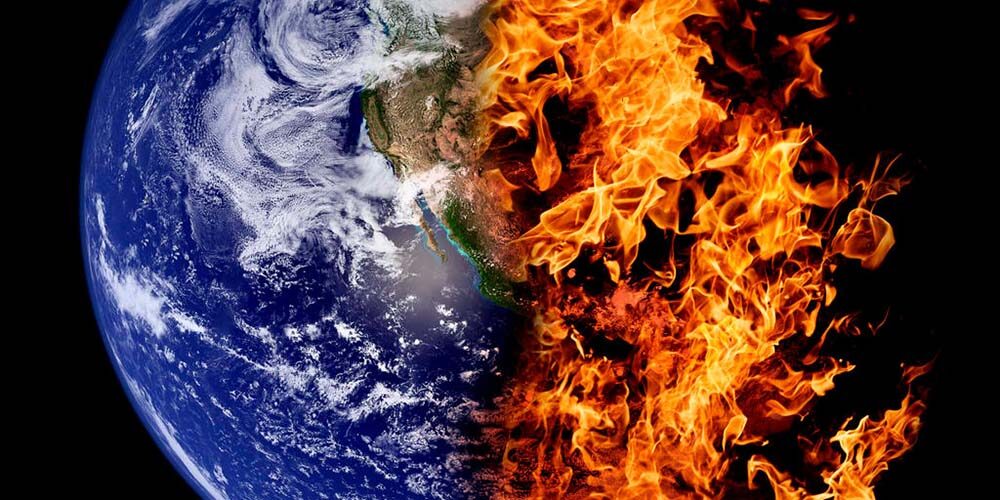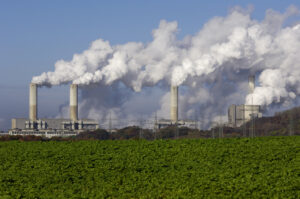The blame game
A couple of years ago, I accepted an interview request from a conservative radio host. It was about the time that Drew Gronewold and I were talking about high water levels on the Great Lakes. We maintained a warming climate could produce both record-high and record-low lake levels. Critics latched onto this statement as proof that climate scientists attribute anything we want to global warming. I understood that criticism, and I wrote a little piece called “Actually, climate scientists don’t blame anything they want on climate change.”
I researched the radio host and was prepared to meet for a productive conversation. I focused on a couple of key concepts, and as we closed, he asked how I felt about dire predictions made by the Intergovernmental Panel on Climate Change (IPCC). Did I believe the world was going to end in 10 years, he asked, “as the IPCC said?”
“Of course not,” I replied, and we spoke for another 30 minutes.
That interview never aired. Why? It did not play into the polarized narrative of the talk show’s business model.
The question of habitability
The amazing underground tunnels that bring water to form the Turpan Oasis in Northwest China provide historical testimony to humans’ abilities to adapt. (Colegota, CC BY-SA 2.5 ES)
More recently, a Michigan alumnus asked me a similar question. “If we do not meet the goals of the Paris Agreement, do you think the Earth will be uninhabitable in 2100?”
Again, the short answer is, “Of course not.”
If Earth is uninhabitable in 2100, it will not be because our climate cannot support human life.
As always, my longer answer requires context.
The two different questions arise from the same place. In 2018, the IPCC released Global Warming of 1.5 ° C: An IPCC Special Report. The media covered it widely, often using such extreme headlines as “The world has just over a decade to get climate change under control, U.N. scientists say.”
But as we consider the question of habitability, we should recognize that immense ranges of temperature and precipitation already characterize the Earth’s climate. People have adapted to extreme cold in Siberia. Others are thriving in the hot, arid Middle East. The amazing underground tunnels that bring water to form the Turpan Oasis in Northwest China provide historical testimony to humans’ abilities to adapt.
In the climate of 2100, there will be plenty of environments between these current extremes. Hence, it is safe to conclude that Earth will be habitable.
Sustaining life
In the 1965 film Dr. Zhivago, starring Omar Sharif, the endless Russian winter became a character in its own right A set in Spain doubled for the oppressive, soul-crushing Siberia. (MGM, 1965.)
Though humans have adapted to these extremes, they do not support large populations. More targeted questions for 2100 may be: How many people can the planet support? How many will have access to technological adaptation strategies, such as floating cities? Does the human species have the ability to maintain planet-supporting infrastructure?
Humans have, always, experienced changing climates and harsh weather; it is part of our very nature. In the temperate, mostly stable climate of the past 10,000 years, we have grown accustomed to large and small adaptations. We’ve internalized expected climate extremes in our behavior and practice. We have seen industry and policy changes when we’ve experienced new extremes; for example, stronger building codes on the South Florida coast following Hurricane Andrew.
These two facts — that we can live in extreme conditions and that we have innate experience in managing our exposure to climate – establish (in me) some confidence in our capacity to cope with the coming changes.
But let’s not get ahead of ourselves. Though the climate of Earth will be habitable in 2100, we will be experiencing new extremes. Each decade will be different from the previous and next decade. The climate future could be quite bleak.
What to expect
Earth’s average surface temperature will increase over the next several decades. Ice will melt and sea levels will rise. These developments will exacerbate existing challenges and create new ones. People will flee the flooding and inhospitable coasts while others will experience extended, severe drought. Temperatures will be dangerously hot in more places and at more times than ever before. Less of Earth will be as agreeably habitable as in the past.
Ecosystems and our relationships with ecosystems will continue to change, creating even more insecurity on the planet. Whole populations will be forced to relocate, and agricultural regions will shift according to available resources. Our building practices and engineering specifications will have to evolve.
The flaw in the message
Lowering emissions is critical to avoid the “worst effects” of global warming, according to the IPCC. (Image: iStock.)
As the climate changes, it is the human response that will either safeguard or imperil the planet’s future habitability. In 2007, Al Gore and the IPCC won the Nobel Prize for Peace for their efforts to bring these issues to the world’s attention so we could anticipate and prepare for this change.
And I must point out the IPCC report cited by my radio interviewer does not say all will be lost in a decade if humans don’t get a handle on our carbon dioxide emissions.
The report stated that by 2030 emissions need to be below 2010 levels by certain percentages to meet 1.5 ° or 2.0 ° C warming goals. This is critical to avoid the “worst effects” of global warming.
There is no evidence we will meet those goals and we are fast approaching that increase of 1.5 ° C. Are we, then, condemned to “the worst effects?”
The false choice
In the futuristic film ‘Waterworld,’ the polar ice cap has completely melted and the sea level has risen over 25,000 feet, covering nearly all of the land. (Universal Pictures, 1995.)
Here is the problem with that argument. It places our very existence in balance: “Meet this goal or climate will be an existential threat.” It also wrongly suggests that if we meet the goal, we will have avoided dangerous climate change. Problem solved. This is not true.
The 2030 goal is part of a process similar to “flattening the curve” during the COVID-19 pandemic. Just as in our responses to COVID-19, if we fail to meet the 2030 goal, we are making the problem worse. We are committing to a more difficult path and more damage, including loss of life. From a mitigation perspective, we will need to continue to reduce greenhouse gas emissions in the decades following 2030. Drastically.
More importantly, this “do-or-die” message diminishes the serious attention we should be paying to adaptation. We already have experienced and are committed to more warming. And we must develop a more systematic and anticipatory approach to extreme storms, fires, droughts, and floods. Today’s decisions regarding adaptation and mitigation will influence the quality of life for decades to come.
There is a more subtle communication element at work too. Though the emissions curve for carbon dioxide is relentlessly increasing, we have, in fact, avoided significant emissions. This is due to improved energy efficiency and growth in nuclear, wind, and solar energy. We’ve also increasingly transitioned from coal to natural gas to produce electricity. So, while the chatter in the public discourse is that we have “done nothing” to meet the 2030 goal, that is far from the truth.
Still, there is an urgency right now to reduce emissions further and take more drastic action. If we don’t, the moves we make between now and 2100 will become riskier, more difficult, and more expensive. The more slowly we reduce emissions, the more bleak 2100 becomes.
It never has been easy
For some people, the projected “peril” of 2030 is a motivating factor in reducing emissions. Others are defeatists who find the 2030 goals impossible and thus irrelevant. And there are those who put faith in technology to maintain a habitable planet.
Framing climate change in a semblance of realism is most important. This way, people can see what needs to be done and place themselves in personal, professional, and political positions to face the challenges it brings. As individuals, we need to broadcast effective influence so that more of us can understand, anticipate, and address future problems.
It won’t be easy. Never has it been so true that our here-and-now behavior will so directly impact the next hundred years. Never has it been so critical to revisit and adapt our decisions on a personal and societal level. Never has it been so true that we need a global and holistic approach to humanity’s choices and actions.
Climate change is a hard, wicked problem. But it is in the capacity of human ingenuity to anticipate, to address, and to thrive.
(Lead image from the Paramount Classics documentary “An Inconvenient Truth,” 2006.)
A version of this blog appeared, originally, as a Climate Blue column in Michigan Today.




